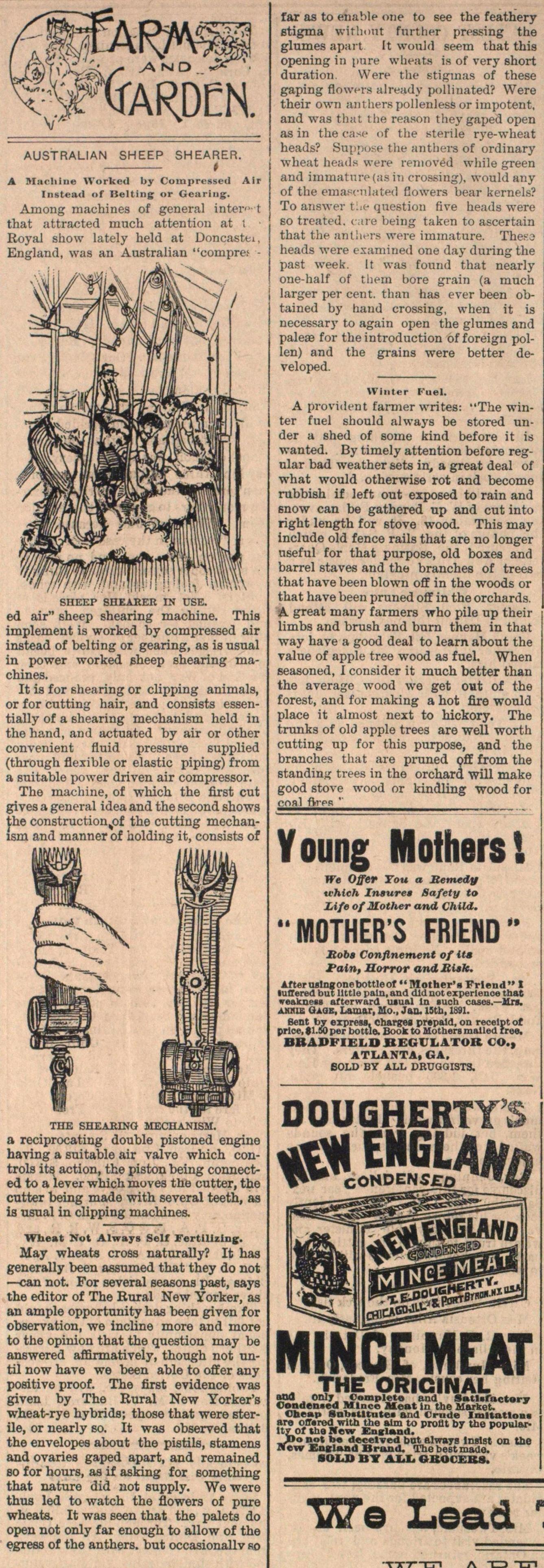Wheat Not Always Self Fertilizing

May wheata cross naturally? It bas generally been assumed that they do uot - can not. For several seasons past, says the editor of The Rural New Yorker, as an ampie opportnnity has been given for observation, we incline more and more to the opinión that the question may be answered aflirmativeiy, though not until now have we been able to offer any positivo proof. The first evidence was given by The Rural New Yorker's wheat-rye hybrids; those that were sterile, or nearly so. It was observed that the envelopes about the pistils, stamens and ovaries gaped apart, and remained so for hours, as if asking for Bomething that nature did not supply. We were thus led to watch the flowers of pure wheats. It was seen that the palets do open not only f ar enough to allow of the egresa of the anthers. but occasionallv ro far as to enable one to see the feathery etigma without fnrther pressing the glumes apart It would seem that this opening in pure wbeats is of very short duration. VVere the stiginas of these gaping flowcrs already polliuated? Were their own nmherspollenless or impotent, and was that the reason they gaped open as in the case f the sterile rye-wheat heads? Suppose the antherji of ordinary wheat head.s were removed while green and ix&matnre (as in croanng), would any of the ema.uculated fiowers bear kernels? To anawer tUe qneetioD five heads were so treated. care being taken to ascertain that the anthers were iininature. TheF„ heads were examinad one day during the past week. It was found that nearly one-half of them bore grain (a much larger per cent, tlian has ever been obtained by hand crossing, when it is necessary to again open the glumes and palese for the introduction of foreign pollen) and the grains were better developed.
Article
Subjects
Old News
Ann Arbor Register